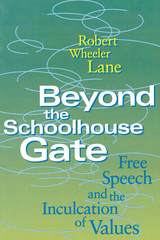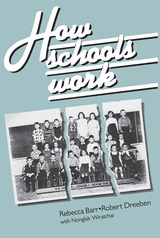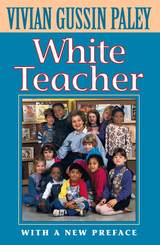
The teacher's role is utterly unique. Assigned at random to a group of children who think, learn, and interrelate in complex, subtle, and individual ways, he or she is expected to transmit specific educational material uniformly in a set amount of time. Appropriately, this book on classroom dynamics is also unique. By applying eclectic methodological strategies to the study of teacher–student interactions, it gets beyond the biases that underlie more traditional analyses of classroom life.
Carew and Lightfoot devise and implement diverse methods for describing, recording, and interpreting classroom processes, and then synthesize their findings for each of the four classrooms studied. Fascinating stories emerge of how the four teachers, each with limited resources of time, space, energy, and emotion, distribute their attention among their students. Over time, patterns develop. Some are patterns of positive discrimination, in which the teachers recognize and respond to individual children's needs; and others are patterns of negative discrimination, in which the teachers reveal particular biases on such grounds as race and sex. Consciously or not, the teachers display their individuality in terms of values, motivations, reasoning, and behavior.
The original and thorough approach of Beyond Bias reveals teachers in their many facets, from what makes them most effective to what leaves them most vulnerable. All professionals and researchers concerned with the educational process will find immense value in Carew and Lightfoot's careful analysis of what a teacher is and enlightened synthesis of what a teacher should be and can be.



Viewing schools as part of a social organization with a hierarchy of levels—district, school, classroom, instructional group, and students—avoids the common pitfalls of lumping together any and all possible influences on student learning without regard to the actual processes of the classroom. Barr and Dreeben systematically explain how instructional groups originate, form, and change over time. Focusing on first grade reading instruction, their study shows that individual reading aptitude actually has little direct relation to group reading achievement and virtually none to the coverage of reading materials once the mean aptitude of groups is taken into consideration. Individual aptitude, they argue, is rather the basis on which teachers form reading groups that are given different instructional treatment. It is these differences in group treatment, they contend, that explain substantial differences in learning curricular material.



READERS
Browse our collection.
PUBLISHERS
See BiblioVault's publisher services.
STUDENT SERVICES
Files for college accessibility offices.
UChicago Accessibility Resources
home | accessibility | search | about | contact us
BiblioVault ® 2001 - 2024
The University of Chicago Press









